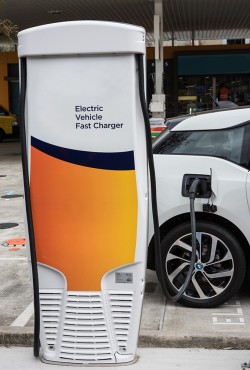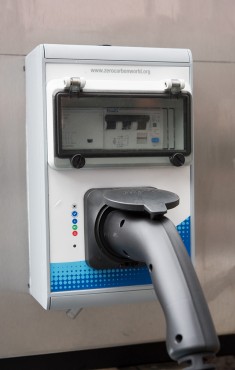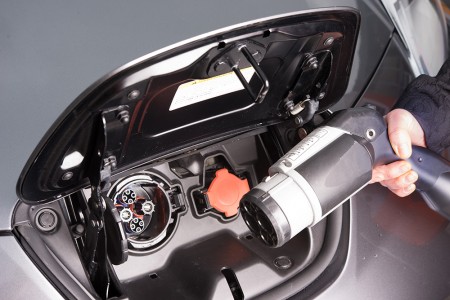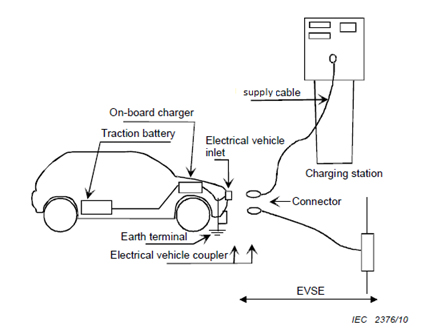The different components of electric vehicle charging equipment used for public charging are outlined here, including charging point connectors and socket outlets.
Electric Vehicle Supply Equipment (EVSE) is the internationally recognised term to describe the conductors, the electric vehicle couplers, attachment plugs, other accessories, devices, power outlets or apparatuses installed specifically for the purpose of delivering energy from the electricity network to the electric vehicle and allowing communication between them if required.
An overview of the main charging components is provided below.
The charging station supplies and manages the electricity supplied to the electric vehicle and ensures the charging of the electric vehicle is safe.
In addition to safety, consideration should also be given to other features that may enhance the charging service for customers, such as Open Charge Point Protocol (OCPP).
We recommend that charging stations include OCPP management software to:
This software provides charging station investors with the flexibility to access other networks, meaning their service can be open to all customers.
See charging an electric vehicle for more information about charging how the charging process works.
The supply cable transfers electricity from the charging station to the connector on the electric vehicle. It also provides communication between the vehicle and the charging station, allowing them to work together to control how the vehicle is charged.
The supply cable may be hard-wired into the charging station (i.e. “tethered”), or it may be connected to the charging station by a plug on the supply cable inserted into a socket outlet on the charging station (i.e. “untethered”).

An example of a DC charging station with tethered cables.

An example of a supply cable with a plug inserted into a socket outlet on the charging station.
The supply cable to electric vehicle connection is comprised of a connector on the supply cable and an inlet on the vehicle.

A typical vehicle-side charging point connection.
There are a range of different vehicle inlets that need a matching connector. See types of charging connectors for more information.

The diagram above shows some of the additional charging system components. Detailed definitions can be found on the International Electrotechnical Commission(external link) website.